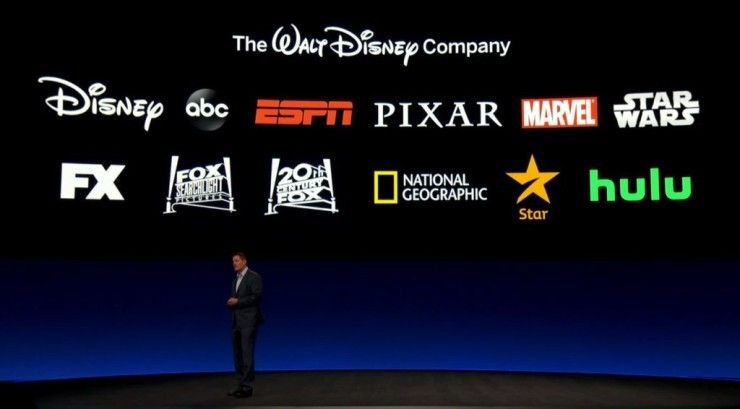It’s a story about baseball, the dot-com era, and Disney’s massive IP library.
Disney is now the king of the streaming giants. With 221.1 million subscribers across its streaming platforms, Walt Disney Co.’s streaming services have a higher number of subscribers than Netflix, which has 220.7 million subscribers. Disney is maintaining its growth while its competitors struggle to keep customers satisfied.
According to the Washington Postthe company’s flagship streamer, Disney+, added 14.4 million subscribers between April and early July.
How did Disney overcome Netflix in just three years? By combining its great content with technology developed and acquired from Major League Baseball. It’s a wild story, so let’s break it down.
Walt Disney Co. just surpassed Netflix in total streaming subs (221.1m vs. 220.7m). And it did so in less than 3 years since launching Disney+.
How? By combining great content with a technology it acquired from the MLB (yes, Major League Baseball) for $2.6B.
Here’s the story🧵 pic.twitter.com/t7gdZ8W1wR
— Trung Phan (@TrungTPhan) August 11, 2022
How Disney’s Streaming Platforms Beat Out Netflix
In a Twitter thread posted by a user @TrungTPhan, Phan describes how the MLB Commissioner in 2000, Bud Selig, wanted to consolidate digital rights and create websites for the MLB’s 30 teams. To keep the project fair for each team, Selig created a new branch of the organization called MLB Baseball Advanced Media, also known as BAM.
Each team gave Selig $1 million per year for four years to fund BAM. With the $120 million invested in BAM, the first big project, MLB.com, is outsourced to a consulting firm, which ends up becoming disastrous for the program and leads BAM to create everything in-house.
In 2001, Japanese baseball player Ichiro Suzuki joined the Seattle Mariners, prompting BAM to create an audio streaming product so their Japanese fans could listen to games live. Millions of dollars were spent on the product, but they were only able to garner a thousand subscribers. With two failures in a row, BAM’s future was bleak.
After spending most of the money given to them by the 30 teams in the league, BAM found a silver lining.
The MLB gave BAM the league’s ticketing rights, allowing BAM to tell TicketMaster to pay for the rights to sell baseball tickets on their site. The ticketing giant ended up giving BAM $10 million, which went directly into BAM’s next endeavour—video streaming.
On Aug. 26, 2002, the MLB made history with its first streamed game, which was the New York Yankees v. Texas Rangers, in which the Yankees defeated the Rangers 6-0 (if you were curious).

Just a reminder that this was three years before YouTube launched, changing the internet forever. This was a huge moment for the dot-com era and the trajectory of media distribution.
Thirty thousand people tuned in to watch a glitchy game, which a BAM executive recalled looking like you were “watching a flip book,” and the fans loved it.
For the 2003 season, MLB TV debuted, and 100 thousand fans paid $80 for access to watch livestreamed games. BAM was now stable and asked the team owners to commit to paying around $642 thousand for four years rather than a million dollars.
What do companies do when they feel comfortable with what they’ve achieved? They start innovating.
BAM figured out how to handle live audiences at a large scale, video quality, and key issues that every streaming service would eventually have to face. Check out more from @TrungTPhan on these innovations:

BAM became the fastest and most cost-effective streaming provider by the mid-2010s and started building for the WWE, Nation Hockey League, PGA, Playstation, and HBO Now.
To give you an example of how good BAM was at building streaming platforms, HBO thought it would cost $900 million over three years to create a well-functioning platform, and BAM did it for $50 million in three and a half months.
MLB understood the value of BAM and released the program as “BAMTech” in 2015.
Then, the media giant that is Disney decided to enter the streaming game, understanding that streaming was the future of entertainment.
In August 2016, Disney made the move to buy a third of BAM for $1 billion with the option to buy more. The next year, Disney paid $1.6 billion to own 75% of BAMTech.
After spending $2.6 billion in total, Disney announced its plan to stream ESPN and its entire IP library. Since 1996, Disney has spent over $82.7 billion on content acquisitions, acquiring Pixar, Marble, LucasFilm, and 21st Century Fox. Their future streaming platform would be worth approximately $85.3 billion.
BAMTech became Disney Streaming Services, and Disney+ went live in November 2019.

Four months later, the world was hit by the COVID-19 pandemic. People turned to the well-crafted streaming services to watch their favorite films as well as new series during the stay-at-home orders.
With Disney+ raking in 151.1 million paying subscribers, and Hulu and ESPN+ bringing in another 69 million, Disney wins big by taking a $2.6 million bet on BAMTech. In three years, Disney’s streaming services have become the most profitable platform today.
Who would have thought that Disney’s streaming success is owed to America’s favorite pastime?
Let us know your thoughts on this wild story in the comments!